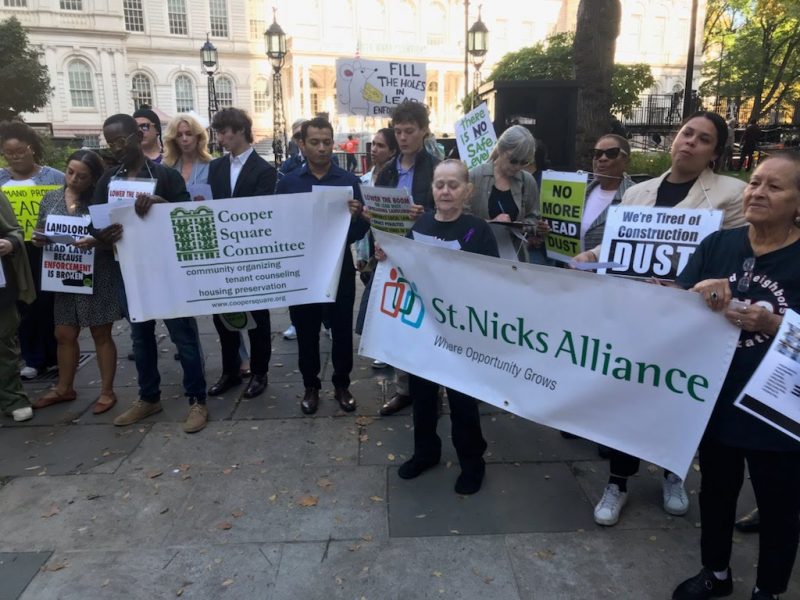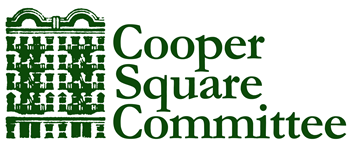
On Wednesday, October 23, 2024, the Cooper Square Committee, together with Lead Dust Free NYC, TakeRoot Justice, and the New York City Coalition to End Lead Poisoning (NYCCELP) rallied at City Hall to announce the release of a new report: “Left in the Dust: The Failure to Protect New York City Tenants from Lead Dust Hazards During Residential Construction.”
The report found that New York City tenants continue to face harsh conditions during construction in their buildings and that protections intended to keep tenants safe from exposure to lead dust are not being followed.
Despite the implementation of twenty-two new laws in recent years, tenants in buildings that have undergone residential construction reported violations of safe work practices, the presence of visible dust, and difficulty holding landlords and city agencies responsible. Fears of lead exposure caused significant distress and disruption in these tenants’ daily lives.
“Most of my 100 year old building underwent extensive demolition and deep renovations over the course of two years. Living in a construction site was stressful for so many reasons but the ever present dust, the respiratory distress, the dry, irritated eyes, the dust carried on my clothing and tracked into my apartment were immediate and concerning,” said Anne Hayes, member of Lead Dust Free NYC. “But now I understand that the likelihood of lead in that dust could have long term effects on my health and it’s difficult to even determine when and how that might unfold.”
The report makes the following recommendations:
(1) Introducing new legislation and strengthening and enforcing existing legislation to better protect against exposure to lead dust in residential buildings, regardless of whether children are present.
(2) Hiring an adequate number of City staff to monitor the effectiveness of tenant protections and interface with tenants during construction.
(3) Implementing stronger penalties for egregious violations of laws designed to protect against lead dust exposure.
(4) Improving access to publicly available information, including X-ray Fluorescence test results.
Read the full press release here.
